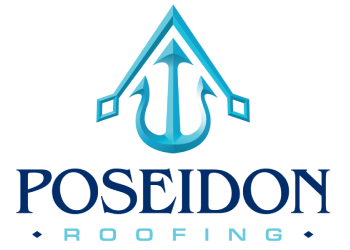When it comes to choosing the right roofing material for your home or commercial property, the options can seem overwhelming. Each roofing type has its unique characteristics, benefits, and considerations. At Poseidon Roofing, your trusted roofing contractor in Naples, FL, we understand the importance of making an informed decision. In this blog post, we will explore various types of roofing, helping you gain a better understanding of their features and suitability for different applications.
- Asphalt Shingles:
Asphalt shingles are one of the most popular and widely used roofing materials for residential properties. They come in a variety of colors and styles, making them versatile and easy to match with different architectural designs. Asphalt shingles are cost-effective, durable, and offer good fire resistance. They have a lifespan of around 20 to 25 years, making them an excellent choice for homeowners looking for a reliable and budget-friendly option. - Metal Roofing:
Metal roofing has gained popularity in both residential and commercial sectors due to its exceptional durability and longevity. Made from materials like steel, aluminum, or copper, metal roofs can last between 40 to 70 years with proper maintenance. They are highly resistant to harsh weather conditions, fire, and pests. Metal roofs are also energy-efficient, reflecting sunlight and reducing cooling costs in hot climates. - Tile Roofing:
Tile roofing is renowned for its timeless elegance and durability. It comes in various materials, such as clay, concrete, or slate, each offering unique aesthetics and benefits. Tile roofs can last up to 50 years or more, making them a long-lasting investment. They provide excellent protection against the elements, are fire-resistant, and require minimal maintenance. However, due to their weight, it’s essential to ensure that your property’s structure can support the added load. - Wood Shake Roofing:
Wood shake roofing provides a rustic and charming look to any property. It is typically made from cedar or redwood and offers natural insulation properties. Wood shakes require proper maintenance to prevent mold, rot, and insect infestations. With regular upkeep, wood shake roofs can last around 30 years. - Synthetic Roofing:
Synthetic roofing materials, such as synthetic slate or rubber shingles, mimic the appearance of natural materials while offering added durability and lightweight features. They are more cost-effective than their natural counterparts and can last up to 50 years or more.
Conclusion:
Choosing the right roofing type is a significant decision that can impact the aesthetics, durability, and overall value of your property. Each roofing material comes with its own set of advantages, and the best choice depends on your specific needs, budget, and architectural requirements. At Poseidon Roofing, we offer a wide range of roofing options and expert advice to help you make an informed decision.
If you need roof installation or repair services, feel free to reach out to our team of residential roofing experts and local commercial roofing contractors in Naples, FL. Visit our website for more information: [https://poseidonroof.com/roof-repair/]. We are committed to delivering top-notch roofing solutions for your property.

